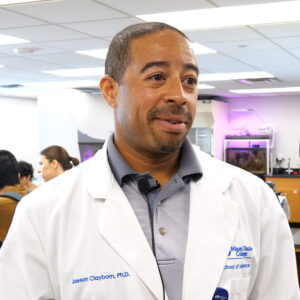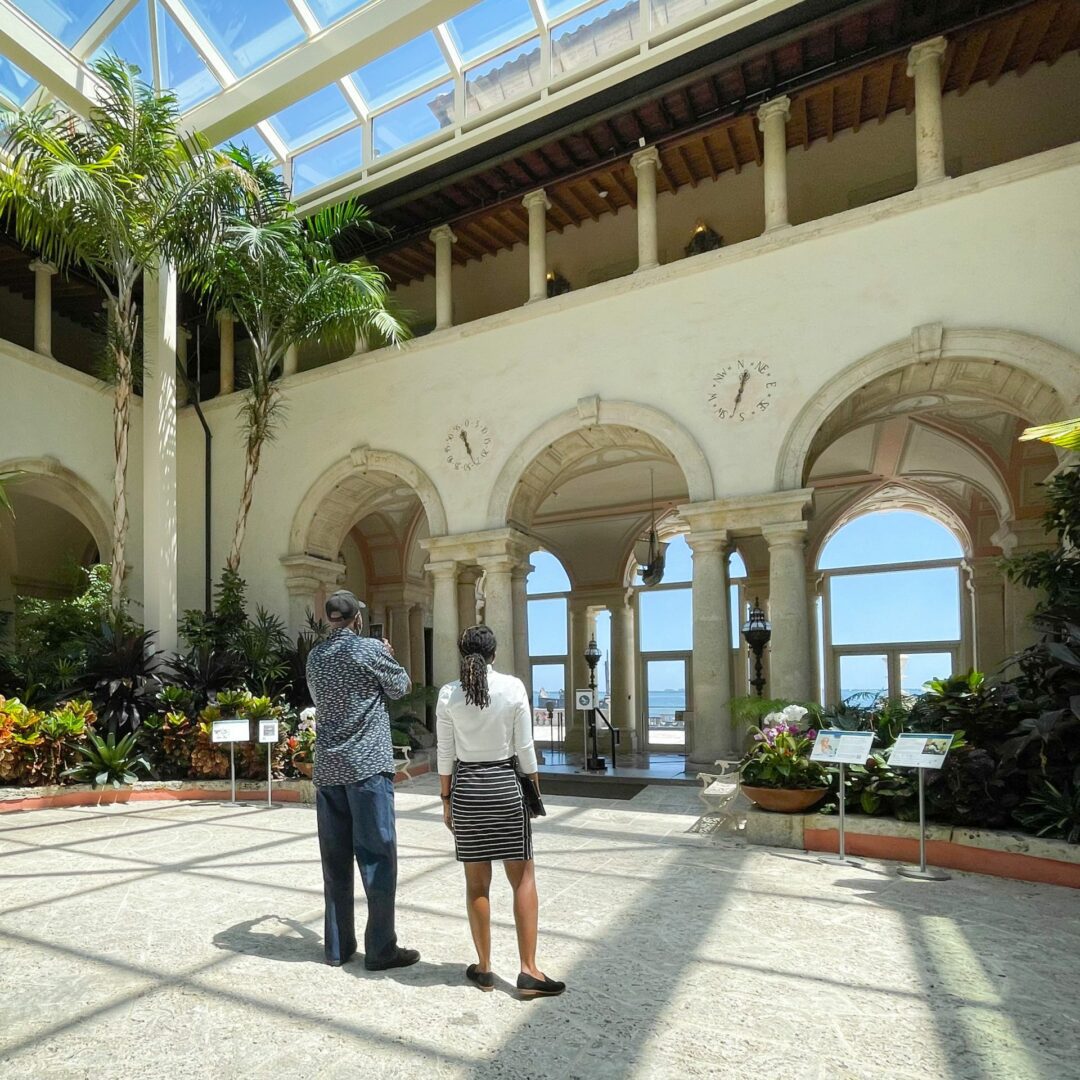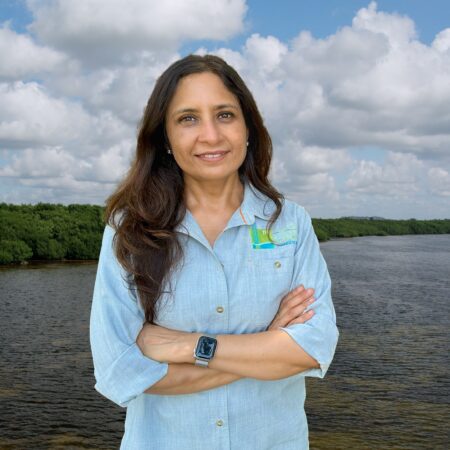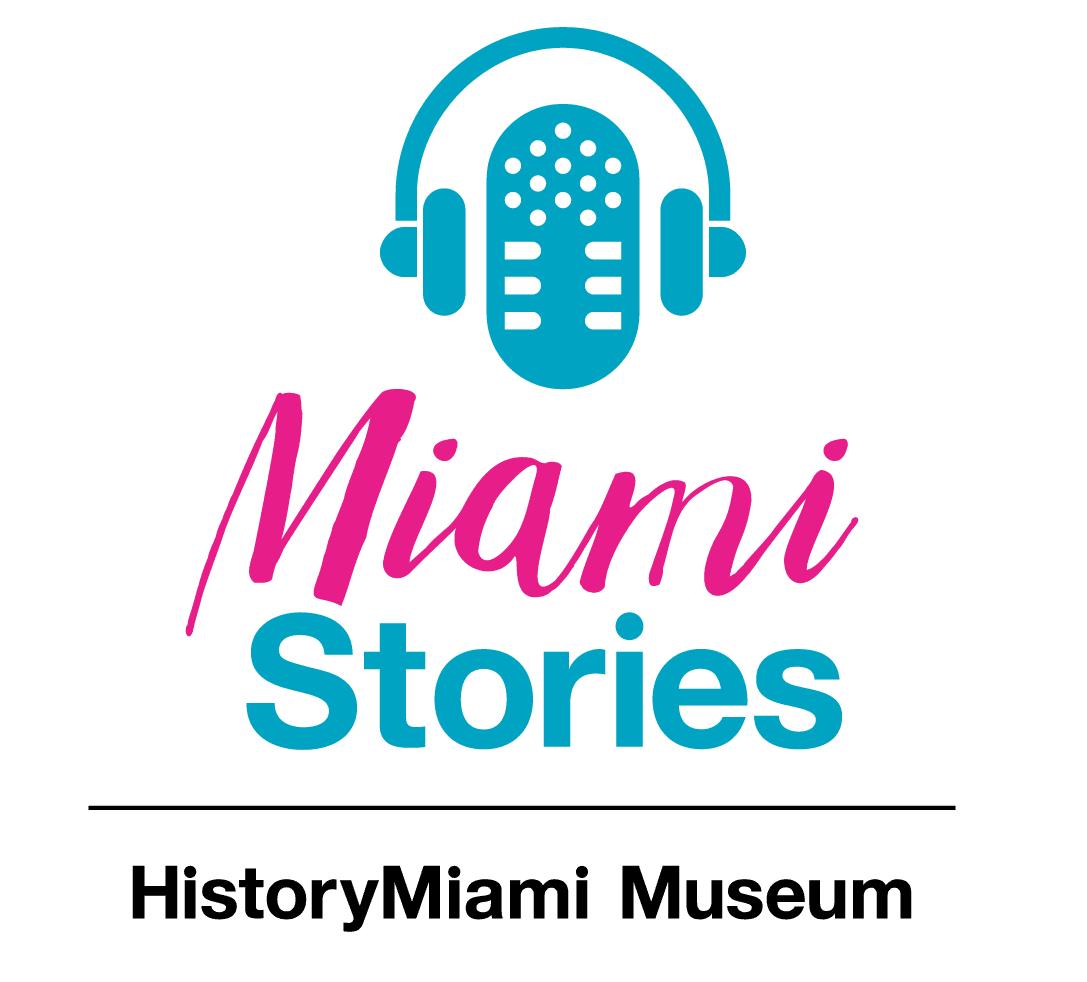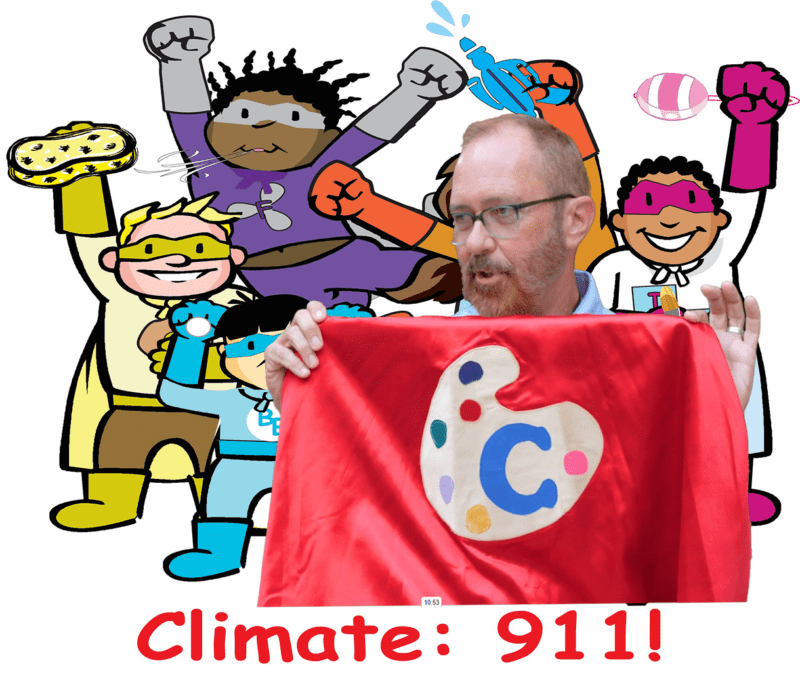My name is Yaatia Asabea and I am a senior at Florida International University with a major in art history and a certificate in African studies. I am writing this blog to share my first time being behind-the-scenes for a Beyond Vizcaya livestream. I am an intern at Vizcaya Museum and Gardens through Humanities Edge. Humanities Edge is a career development program that creates opportunities for Humanities majors. This program finds local internships to be part of so that students can get work experience before graduation. Humanities Edge also works with transfer students from Miami Dade College and they assist in the transition to FIU. I have been able to find internships through them for the past couple of years and this semester I am the Story Coordinator for Vizcaya Museum and Gardens.

On February 28th, 2023, Vizcaya put together a livestream for Beyond Vizcaya, a community storytelling project that tries to connect the museum and local stories that are shared in an open space. For this second season, the focus is the environment and climate change. My role is to find more content to put on the Beyond Vizcaya site that relates to the season 2 topic. The purpose of this livestream was to spread awareness about climate change and how it affects people based on their socio-economic status. It was centered around access and how it influences people at each level. Sarah Curry, who is a seafood educator, Leonie Hermantin, a director at a local Miami community center, and Joanne Perodin who specializes in and researches various matters about the climate. The script for the conversation during the livestream was prepared in advance and many details were added so that the program could run smoothly. The questions asked to the guests were a collaboration of many employees. I got to see some of the meetings where this happened, and everyone was able to add something to the outline.
This livestream is part of Beyond Vizcaya’s second season of their story telling series, this one is about the effects of climate change and Miami’s natural environment. The department putting on the livestream came prepared with questions to ask the panel speakers and created them in a way that aligned with the mission of Beyond Vizcaya. Some of these questions were what foods are difficult to access and why, as well as what community members can do to help ensure they receive the information and services they need relating to climate change. All three guests gave a unique perspective on climate change, Joanne Perodin provided an academic viewpoint, Leonie Hermantin gave the community outlook and how climate change affects the local people, while Sarah Curry gave an industrial approach.
Sarah Curry, who is the founder of Sereia Films which educates seafood consumers about smarter choices, explains how seafood is more sustainable for the climate and it has a lower footprint than other sources of protein (04:15). As some may try to buy these climate-friendly foods, there may be issues with access, and this can be seen through cost barriers (07:30). Leonie Hermantin is the Director of Development and Communications and Strategic Planning at the Sant La Haitian neighborhood center, which provides free access to information and services. Some of the ways Sant La does this is by reaching the community about hurricane preparedness resources like shelter locations and supplies through trusted people (12:24). Joanne Perodin, who is the co-founder of the Optima Network which analyzes the intersection between group dynamics, environmental justice, and systems thinking, speaks about the realities of climate change. For example, rising temperatures affect everyone, but the experience is very different for those who can afford to have the AC on all the time and those who cannot (19:42). With this combined the audience can get a good sense of how climate change is altering different segments of society and what some workable solutions are. This provided a platform and space for community leaders to share their findings about climate change in Miami.
Honestly, when I got to the location for the livestream, I didn’t know what to expect. My first impression was the swarm of equipment that was being set up. I thought it would be a video camera and some chairs, but there were multiple cameras, microphones, video display screens, and tons of wires. The equipment, placement and internet connection must be done hours in advance. One thing that I noticed that is particularly important is a strong internet connection so that the viewing audience does not have any trouble with the video quality. Being involved gave me a better understanding of what goes into the creation of a livestream.
I originally thought that I was going to mainly observe and take notes, but I got to help with the preparation. I helped test the microphones to make sure the audio was working, and I helped set up the microphones for the panel speakers. They also wanted to check the camera angles, so I sat in for that. During the livestream I did timekeeping and alerted the panelists to how much time was left. I was constantly checking the time so that I didn’t miss the 10-minute mark.
One of the key elements that go into making a successful livestream is coordination. It may seem like a simple thing such as just clicking the livestream button on YouTube, but the team at Vizcaya Museum and Gardens are truly putting together a production.
Overall, the livestream was the combination of many people’s efforts that has been prepared months in advance and there was a great feeling of accomplishment experienced by everyone after completing the panel discussion. I became an intern at Vizcaya when they were nearing the livestream date, so I’m sure that there are other things that were done. This is just my experience and what I observed. The livestream is currently featured on BeyondVizcaya.org and is very insightful.


